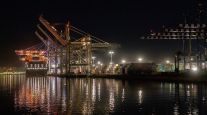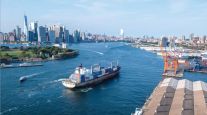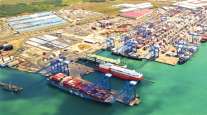SoCal Port Turn Times Improve Six Minutes in September
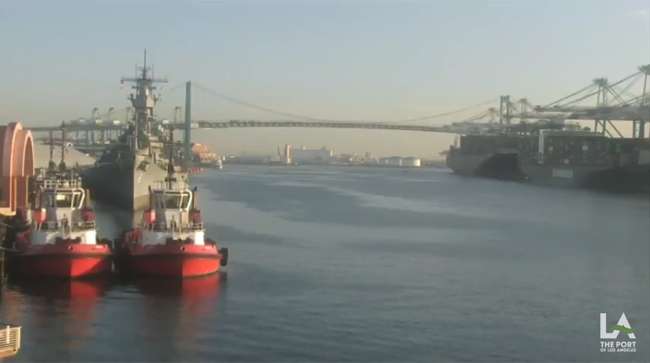
Truck drivers took six fewer minutes to enter and exit the two large Southern California ports last month compared with September 2016, although one year ago, Hanjin Shipping rattled the supply chain when it abruptly shut its doors Aug. 31.
On average, the truck turn time in Los Angeles and Long Beach, Calif., was 81 minutes. At the Port of Los Angeles, the average time was 80 minutes. At the Port of Long Beach, it was 83 minutes. The average September turn time over the past four years was 89 minutes.
The Harbor Trucking Association aggregates the data in concert with Geostamp by using GPS devices and geofencing to measure the time from when a member’s truck sits in the queue before the entrance gate until it crosses the exit.
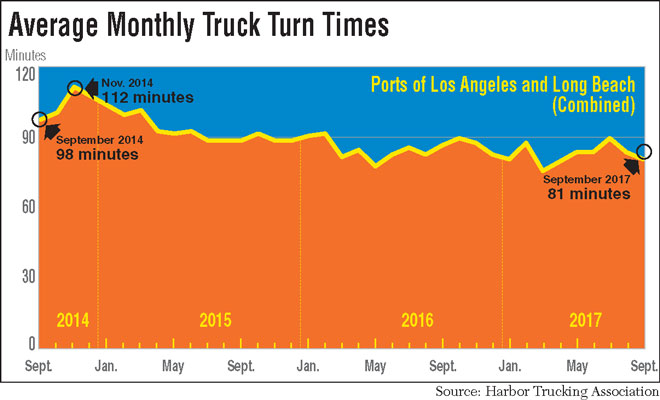
“Middle Harbor continues to outperform everybody. Yusen Terminals International has done a good job seeing more cargo, yet continues to perform well and got the time under 70 minutes,” HTA Executive Director Weston LaBar told Transport Topics.
Middle Harbor and Matson terminals were tied for the quickest with a 37-minute average. Yusen Terminals International fared the best at the Port of Los Angeles at 64 minutes, making it the second consecutive month of less than 70 minutes and remarkably quicker than its 99-minute average in September 2016.

LaBar
“YTI has been open-minded, collaborating with the trucking community and willing to take out-of-the-box ideas to reduce turn times and try them on a pilot basis to see if they make a dent,” LaBar said. “They were the first terminal that tried cargo forecasting, pushing out data about when they expect containers to be available with several days notice.
“They’ve also moved their chassis depot to the YTI east side, moving it out of the main terminal so that they don’t clog up truckers that have their own chassis.”
He also credited the terminal for working with HTA to implement a trucker-friendly appointment system.
Total Terminals International in Long Beach was slowest with a 104-minute average. This is the seventh time the terminal lagged its peers and the eighth time it was over 100 minutes this year. The 2M Alliance — a vessel-sharing partnership between Maersk Line and Mediterranean Shipping Co. — shifted cargo from APM Terminals in Los Angeles to Total Terminals International in April, exacerbating the congestion that plagues the massive Long Beach complex.
Turn times at APL’s Eagle Marine Services terminal in Los Angeles went from 104 minutes in August to 87 in September. However, the Global Gateway South facility shut down from Sept. 28 to Sept. 30 when dockworkers picketed over the unionization of superintendents.
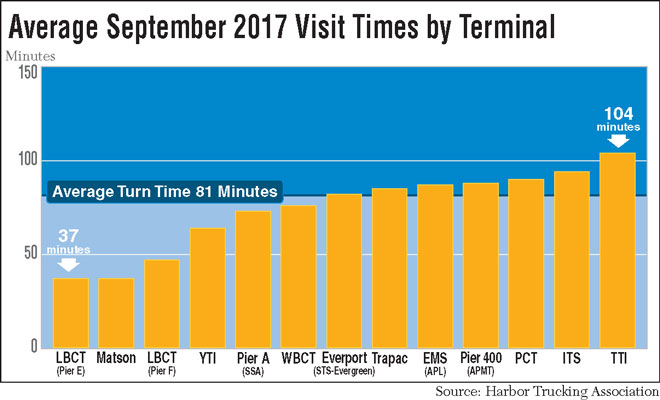
The International Longshore and Warehouse Union Local 63 wants to organize these liaisons between stevedores and upper-level management under a labor contract. APL reached a deal with ILWU to prevent a longer work stoppage, but California United Terminals shut its doors over the summer to avert the union’s efforts. ILWU also is targeting positions at the Ports America-ITS terminal in Long Beach and Everport-STS in Los Angeles.
Labor unrest threatens to upset a bustling peak shipping season in Southern California.
The Port of Los Angeles, No. 1 in North America based on annual container volume, recorded a 2.2% year-over-year increase in cargo to 763,784 industry standard 20-foot-equivalent unit containers, or TEUs, the third-busiest September in its history. Loaded imports declined 0.1% to 388,670, and exports fell 11% to 128,445, only surpassing last year’s total due to a 15% jump in empty containers.
However, cargo volumes through September remain 8.2% higher than one year ago with 6.9 million TEUs. Los Angeles ended last year processing 8.8 million TEUs, the most of any Western Hemisphere port.
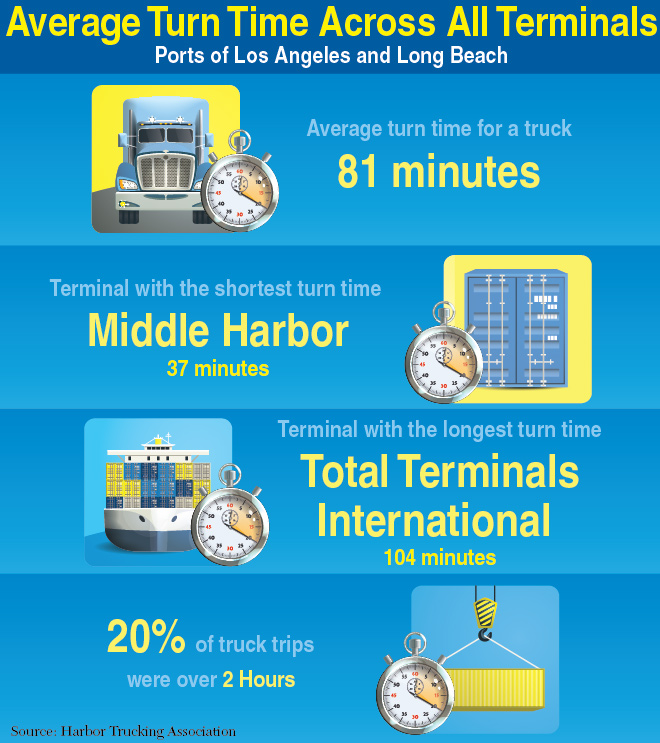
The Port of Long Beach, No. 2 in North America, shattered the record for its busiest September in history. Stevedores processed 701,619 TEUs, a 28% surge from September 2016 when the Hanjin fallout affected volumes. The port moved 2.1 million TEUs in the third quarter, a record for any three-month period in Long Beach and a 16% jump from July to September 2016.
Loaded import containers soared 30% to 366,298, and exports rose 4.1% to 125,336.
For the calendar year, container volumes are up 8.9% to 5.6 million TEUs.
“Simply put, we are having the best trade months in port history,” Harbor Commission President Lou Anne Bynum said. “Back-to-school merchandise was strong for us, and it looks like retailers are optimistic about the holiday season.”
Meanwhile, the governing boards of two ports will hold a joint public meeting Nov. 2 to consider approving the San Pedro Bay Ports 2017 Clean Air Action Plan (CAAP) Update to further reduce air emissions and support sustainable freight movement.


